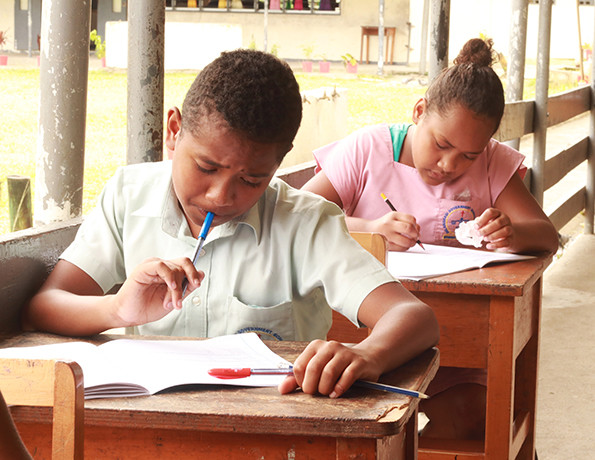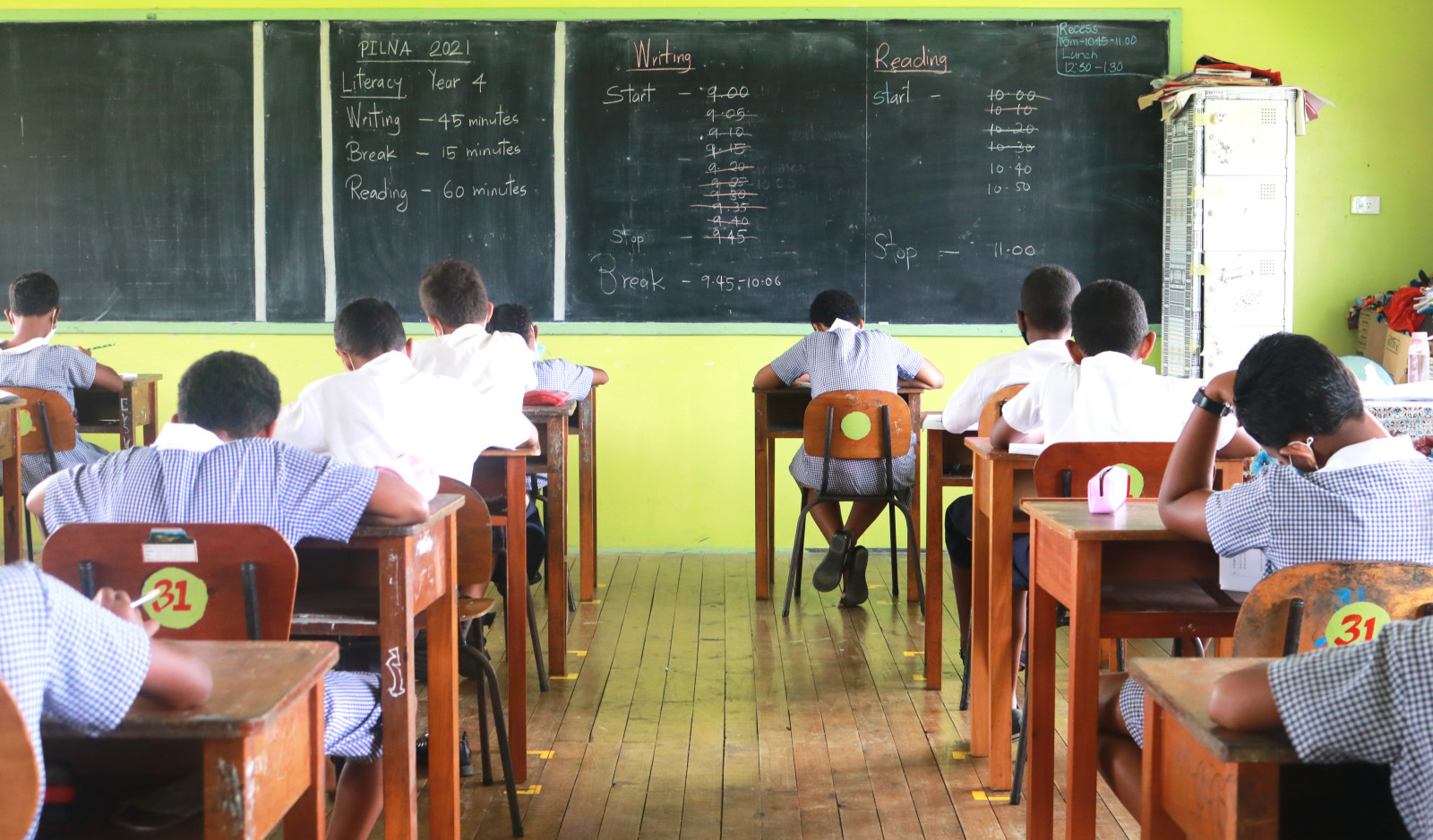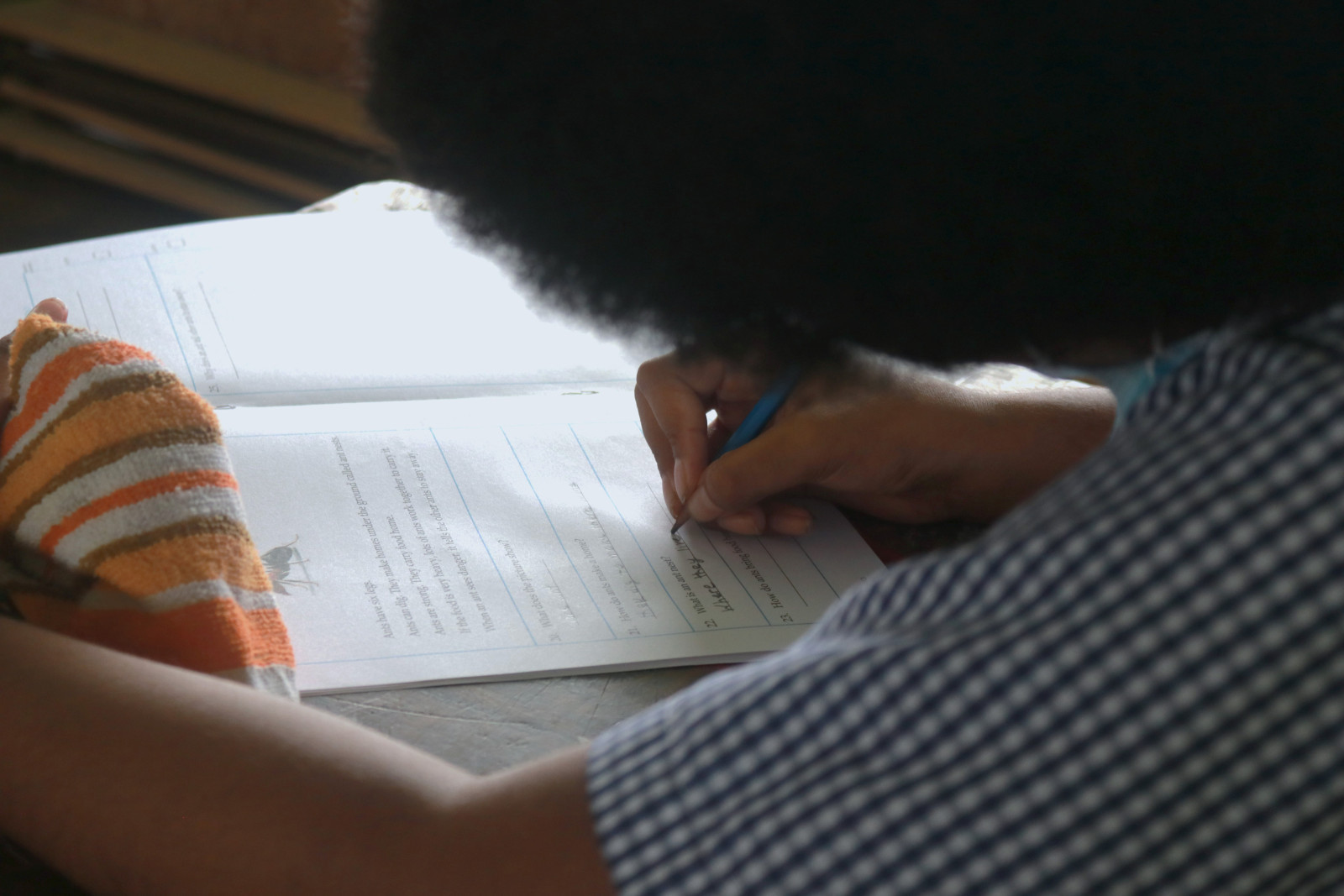Pacific Islands Literacy & Numeracy Assessment
2021 Regional Report
PILNA 2021 collected valuable insights about student performance as well as the experiences within, and environments of, Pacific education systems.
These regional findings are ordered into four sections and will be added to over time. Read on to understand the findings and what can be done to support literacy and numeracy in the Pacific.

Student performance
Understanding student performance in literacy and numeracy is key to understanding the performance of education systems and improving student performance over time.
This section reports the performance of year four and year six students in literacy and numeracy across the region. Findings are presented by subject (numeracy, reading, and writing) as well as by year level (year four performance and year six performance). Read on to discover whether students are meeting performance expectations in these areas.
Context behind student performance
Student performance is influenced by a wide range of factors. It is crucial that performance is looked at in its wider context so that it can be more meaningfully understood.
PILNA 2021 explores Pacific learning environments and the experiences and attitudes of students, teachers, and school leaders. These findings are also compared with student performance. Read on to understand these findings and the factors that are associated with student performance.

2021 Key findings
A summary of the key findings from PILNA 2021: student performance and the context surrounding this.
This section presents a high-level summary of PILNA 2021 findings, key areas of success, and challenges. Read on to understand the main themes from the PILNA findings and the areas requiring action.

2021 Recommendations
PILNA 2021 identified actions needed from governments and regional entities to parents and caregivers.
This section outlines the drivers of these actions from the PILNA findings and presents a set of overarching recommendations for the region. It then presents specific recommendations for regional entities, governments, education practitioners and leaders, and the public. Find out how you can support students and their literacy and numeracy performance here.








